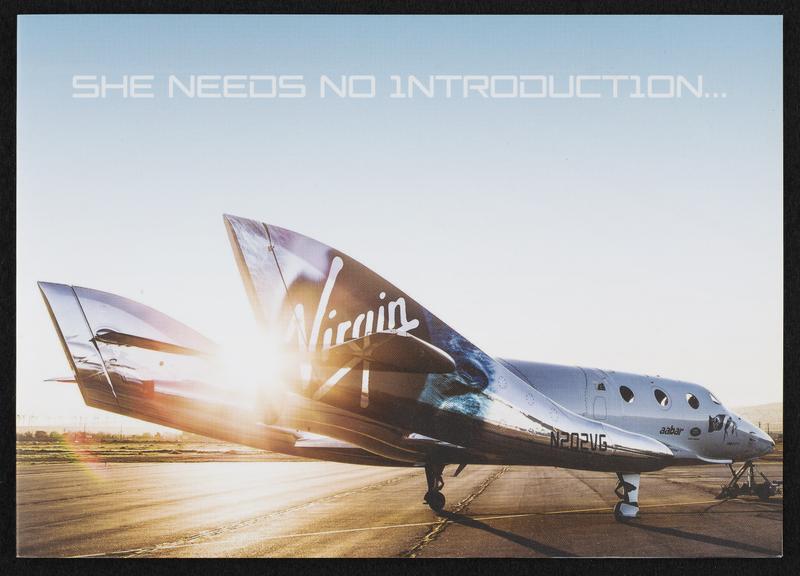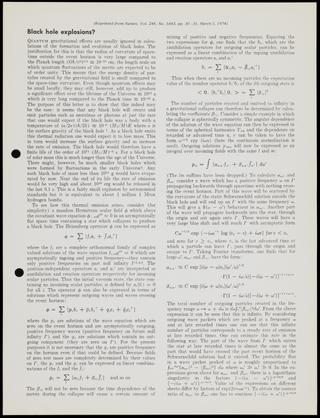
Thank you card, from Richard Branson and Virgin
- Made:
- United Kingdom
- maker:
- Richard Branson and Virgin Galactic












Thank you card from Richard Branson and Virgin for supporting the VSS Unity.
VSS Unity was the second Virgin Galactic spacecraft. The first one, Enterprise, had crashed in 2014. The name Unity was chosen by Stephen Hawking, and its logo also features his iris. Stephen was expected to be on its first passanger flight, but this did not occur within his lifetime.
Stephen Hawking's bookshelves and windowsills were also used to display greeting cards. In contrast to material found inside books, the ones that stand by themselves in the office tend to be relatively recent, dating mostly from after 2015. They relate to people, encounters and events in the last years of Stephen's life.
Among the variety of technical topics outside of Stephen Hawking's scientific expertise that make a presence in his office, the most prominent is spaceflight. Hawking was a very abstract theoretician, but his two most important scientific predictions depended heavily on astronomical observations that could only be conducted outside the Earth's atmosphere. Less than a decade after his dissertation, a NASA x-ray satellite detected the first signal strongly suspected to be a black hole. Through the 1970s and 1980s, rockets and satellites reached into space to measure and image the cosmic microwave background radiation, and continued to improve this map to compare with models of the Big Bang including those proposed by Hawking. Stephen championed space exploration as fundamental to the future of the human species and had public opinions on topics such as the Search for Extraterrestrial Intellicence. Since the 2000s, Stephen also saw the possibility of visiting outer space within his lifetime and was courted by a variety of agencies, entrepreneurs and celebrities advocating for human spaceflight.
Details
- Category:
- Stephen Hawking Office
- Collection:
- Stephen Hawking’s Office
- Object Number:
- 2021-561/718
- Materials:
- paper (fibre product)
- Measurements:
-
overall: 148 mm x 210 mm .02492 kg
overall (card opened): 148 mm x 420 mm
- type:
- greeting cards
- credit:
- Accepted in lieu of Inheritance Tax by H M Government from the Estate of Stephen Hawking and allocated to the Science Museum, 2021




